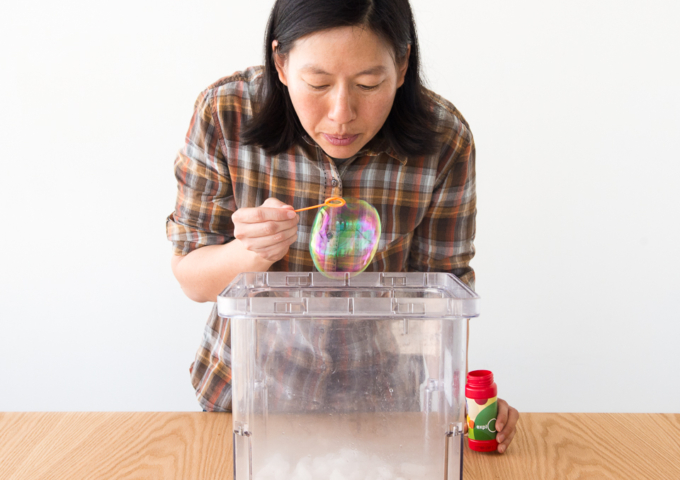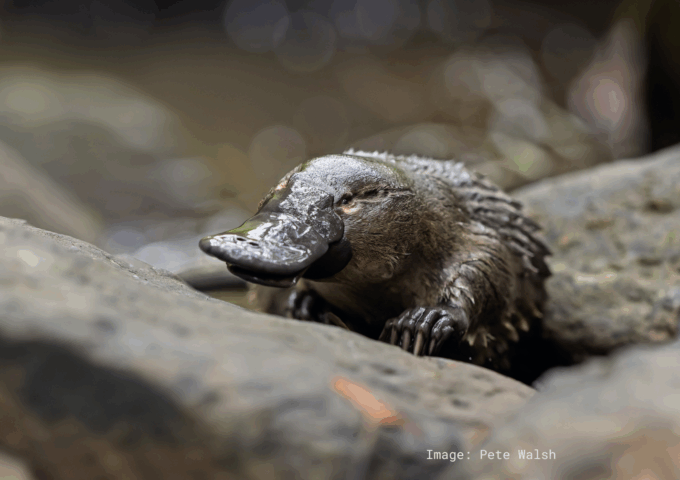
Can you make bubbles float on an invisible cushion? This beautiful investigation illustrates the principles of buoyancy and semi-permeability.
What you need
- A large, clear container such as a small aquarium or large cooking bowl, use plastic to be safer!
- Bubble solution—you can use a store-bought solution, or make your own using a bubble mix recipe (if you make your own, it can be helpful to let the bubble mix rest for a day before using it)
- ¼ cup baking soda
- 1 cup vinegar
What to do
- Put the baking soda into the container
- Slowly pour in the vinegar until the mixture is bubbling quite a lot, but not overflowing. The bubbles will start to subside, but do not move or disturb the container.
- Blow bubbles with the wand across the top of the container so the bubbles float down into the container. The bubbles should hover in the container, rather than fall to the surface of the mixture.
- Watch for a few minutes to see what happens to the bubbles.
Before reading the next section, make some guesses about why the bubbles are floating above the mixture.
What’s happening?
When baking soda and vinegar are mixed together, they create a chemical reaction that fizzes a lot, but also forms a gas called carbon dioxide. Carbon dioxide is slightly heavier than air, which is mostly nitrogen and oxygen. Because the chemical reaction is happening in a container, a dense layer of carbon dioxide gas is accumulating above the fizzing vinegar solution and as long as you aren’t disturbing the container too much, it should stay in there. Since the bubbles you blew into the container are filled with air, they float on the layer of carbon dioxide gas that the baking soda and vinegar created. This works just like a helium balloon floating in the air, the helium inside the balloon is less dense that the air outside so it floats.
When you watched for a few minutes, you might have noticed the bubble getting a little bit bigger or sinking. Why do you think that was happening?
The soapy wall of the bubble allows carbon dioxide to pass through but keeps the air inside. Initially, the amount of carbon dioxide gas is low inside the bubble and high outside the bubble. The carbon dioxide gas from the vinegar solution slowly passes through into the bubble. The added carbon dioxide makes the bubble denser, causing it to gradually sink. This process is called osmosis. The bubble wall is a semi-permeable membrane—a surface that allows some substances to pass through while preventing others from doing so. The cells in your body have the same property. Water, oxygen, and carbon dioxide easily enter some cells, whereas other molecules do not.
This activity was adapted from the Exploratorium’s Science Snacks: low-cost, teacher-tested activities for the classroom and the curious. You can find this and many more activities at https://www.exploratorium.edu/snacks/bubble-suspension






